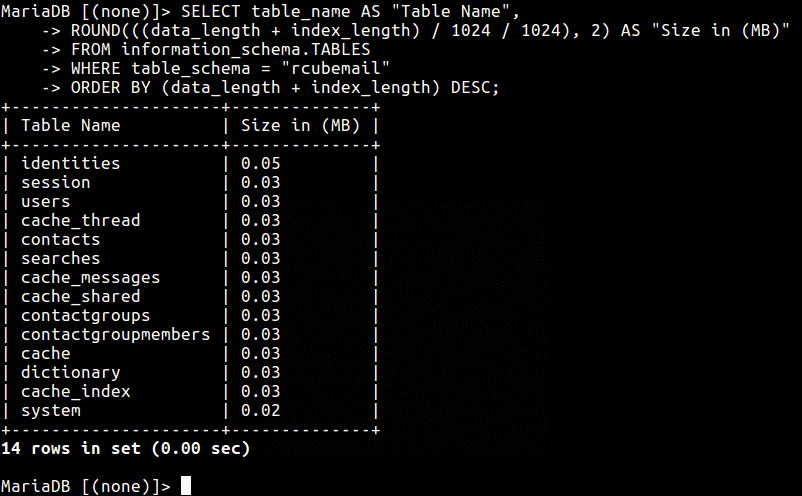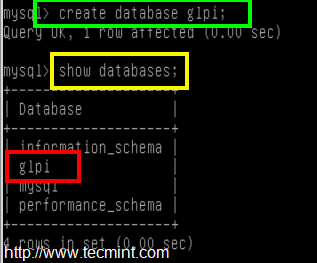

Type '\c' to clear the current input statement. Other names may be trademarks of their respective Oracle is a registered trademark of Oracle Corporation and/or itsĪffiliates.
#Mysql show databases cli password#
Once login, you should see the following output: mysql: Using a password on the command line interface can be insecure. You can also drop the MySQL database after log into the MySQL console.įirst, log into the MySQL console with root user with the following command: You should see the following output: Dropping the database is potentially a very bad thing to do.Īny data stored in the database will be destroyed.ĭo you really want to drop the 'testdb' database yĭelete MySQL Database within MySQL Console Mysqladmin -u root -proot-password drop testdb Next, delete the database named testdb from the above list by running the following command: You should see the following output: mysqlshow: Using a password on the command line interface can be insecure. Mysqladmin is a MySQL command-line utility that can be used to perform some basic MySQL tasks including, creating and deleting databases, checking MySQL processes, Setting root password and many more.īefore deleting any database, list all available databases in your system with the following command:

MySQL user and password associated with the database or MySQL root password.A server running Ubuntu 18.04 with MySQL and PhpMyAdmin installed.In order to delete a MySQL database from your system, you must have a MySQL user account with delete privileges. You can delete the MySQL databases by using either a command-line interface or PhpMyAdmin web-based interface.
#Mysql show databases cli how to#


Tip: Names of databases, tables, and fields in MySQL are case sensitive.Note: Replace foo with the name of your desired database.Invoke the MySQL client as described previously in this document.~/mysql/bin/mysql -u root -p Creating and Using a Database Start the MySQL client and log in as user root by typing the following command:.If you’re not sure how to do this, click here for instructions. Log into your web development server using a terminal emulator.To invoke the client again, follow these instructions: You can issue SQL queries to your database using the command-line MySQL client, which you used during the installation of MySQL when you set user/host grant permissions in the “mysql” database. Note: This article assumes that you have followed the instructions for setting up MySQL on the UW servers. This article will show you how to issue basic queries to create, modify, or retrieve information in MySQL databases using the command-line MySQL client. SQL is a special language that allows programmers to issue instructions or ‘queries’ to databases. For this you will use SQL (Structured Query Language). Once you know the basics of administering your MySQL server, you can begin the important part: using MySQL to store your data. U Drive slow to open and save MS Word Documents for some clients.U Drive: Central File Storage for Users.Authorizing UW NetIDs by Affiliation Type.Adding the UW Privacy Policy and Terms of Use to Your Site.Using SQL and Command-Line MySQL Client.Setting your per-user Web Development System on Shared UW Hosting.


 0 kommentar(er)
0 kommentar(er)
